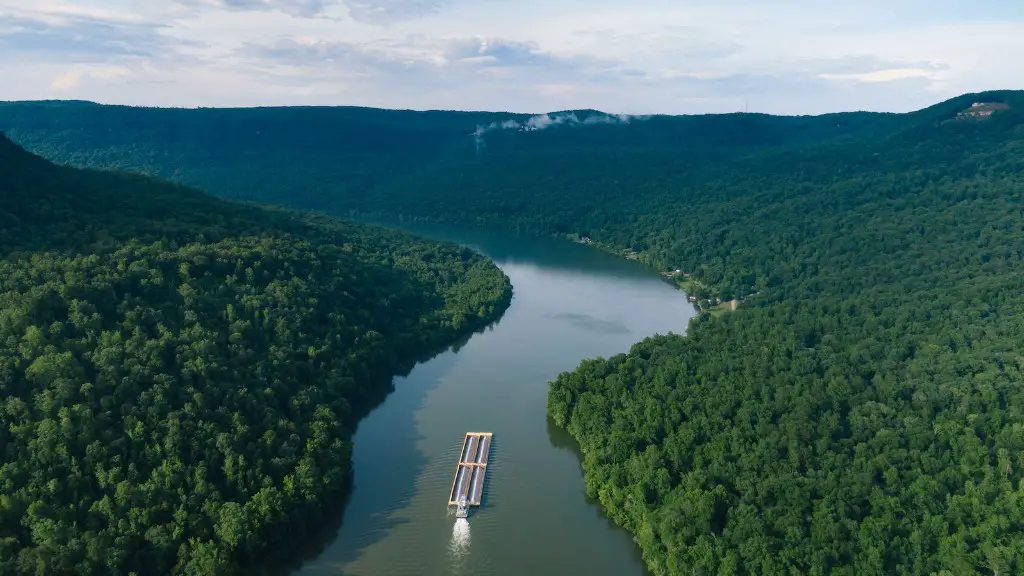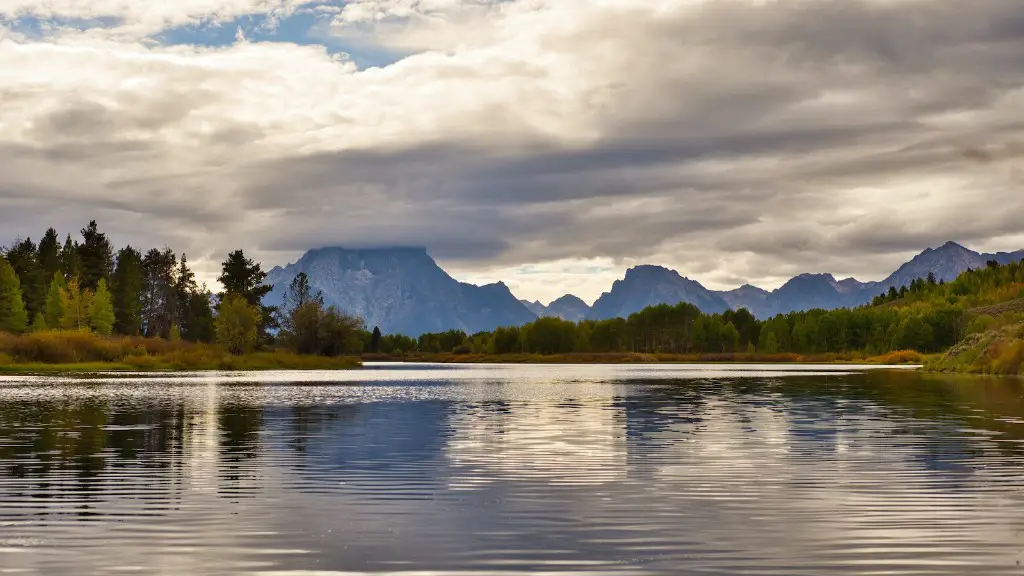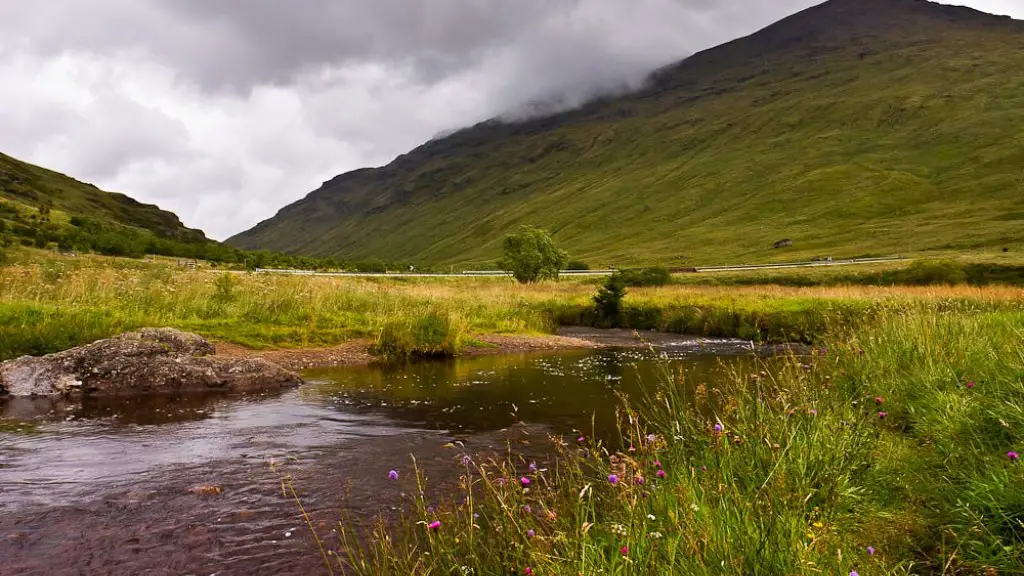The Amazon River is full of wildlife! Amazonian fish, reptiles, amphibians, mammals, and birds all call the Amazon home. Some of the most iconic animals in the Amazon include pink river dolphins, anacondas, and caiman. However, there are many other lesser-known but equally fascinating creatures living in the Amazon, such as the boto, electric eel, and poison dart frog.
There are many different types of wildlife in the Amazon River, including fish, amphibians, reptiles, mammals, and birds.
How many animals live in the Amazon river?
The Amazon is one of the most biodiverse places on Earth, with an incredible variety of plant and animal life. To date, over 40,000 plant species, 427 mammal species, 1,300 bird species, 378 reptile species, and 400 amphibian species have been found in the Amazon, along with 3,000+ freshwater fish species. The Amazon is truly a nature lover’s paradise, and is sure to provide endless exploration and discovery.
The Amazonian Manatee is a giant among the animals that call the Amazon home. This massive mammal can grow up to 28 meters in length and weigh over 540 kilograms. The female of the species is usually larger than the male. Although they are related to elephants, these gentle giants are more at home in the water. They can be found swimming in rivers and lakes throughout the Amazon basin.
What monsters are in the Amazon river
The Amazon River is home to some of the strangest and most terrifying creatures on the planet. From giant leeches to vampire fish, there is no shortage of weird and wonderful creatures to be found in this vast and varied ecosystem. Here are just six of the many weird and wonderful creatures that call the Amazon River home.
Vampire Fish:
These strange fish are aptly named, as they are known to suck the blood of other fish in the river. They have large, sharp teeth that they use to puncture the skin of their prey, and they can drink up to 20% of their body weight in blood in a single meal!
Arapaima:
One of the world’s largest freshwater fish, the arapaima can grow up to 3 meters in length and weigh over 200 kg. These giant fish are apex predators in the Amazon, and are known to attack and eat smaller fish, mammals, and even reptiles.
Green Anaconda:
One of the largest snakes in the world, the green anaconda can grow up to 7 meters in length and weigh over 100 kg. These massive snakes are not to be messed with, and have been known to kill and eat large mammals such as deer
The Amazon rainforest is home to a variety of crocodiles, including caiman. Caiman are a type of alligator and can reach large sizes. The black caiman is one of the largest crocodiles on Earth and rivals the saltwater crocodile of the Indo-pacific realm.
Is there sharks in the Amazon river?
Bull sharks are one of the few species of sharks that can live in both freshwater and saltwater environments. They are often found in rivers and lakes, and have been known to travel up the Amazon River into Peru. However, they are not commonly found in the open ocean.
The Amazon is home to some of the most diverse and exciting swimming spots in the world. With around 60,000km of inland waterways, countless lakes, lagoons and beaches, there is something for everyone to enjoy. Whether you are looking for a relaxing swim or an adventurous swim, the Amazon has it all.
What is the top predator in the Amazon river?
The Black Caiman is the largest predator found in the waters of the Amazon River. They subsist by eating capybaras, piranhas, Giant River Otters and the odd man, here and there. They are a threat to humans and should be avoided if possible.
The red piranha is a species of piranha that is widely distributed and abundant in the Amazon rivers. At a respectable length of 35 cm, the red piranha is not a danger to swimmers unless water levels and food supplies are low.
How long would it take to swim the Amazon river
Assuming that the average person can swim at a rate of one to two miles per hour, it would take approximately 120 days to swim the entire length of the Amazon River. However, if someone were to swim for 12 hours every day, it would take twice as long, meaning the swimmer would conquer the Amazon River in about eight months.
In areas with vast inland waterways and little policing, these types of vessels can be easy targets for pirates. This is especially common in the Amazon, where locals call these criminals ‘river rats’. To protect against this threat, it is important to have a well-armed and trained crew, and to avoid sailing in areas known to be dangerous.
lidar is a remote sensing technology that uses light to map objects on the ground.
In this case, scientists used it to map the ruins of an ancient city in the Bolivian Amazon.
The city was abandoned some 600 years ago, but the lidar data allowed scientists to see it in a whole new light.
The data showed the city was much larger than previously thought, with a complex network of streets and buildings.
The study is a great example of how lidar can be used to reveal hidden features on the landscape.
Piranhas are a freshwater fish that is found in tropical climates. They are known for their sharp teeth and powerful jaws. Piranhas range from northern Argentina to Colombia, but they are most diverse in the Amazon River, where 20 different species are found. The most infamous is the red-bellied piranha (Pygocentrus nattereri), with the strongest jaws and sharpest teeth of all. Piranhas are typically found in rivers and lakes and can grow up to 2 feet in length.
Do dolphins swim in the Amazon river
Distribution:The Amazon river dolphin, also known as the pink river dolphin or boto, lives only in freshwater It is found throughout much of the Amazon and Orinoco river basins in Bolivia, Brazil, Colombia, Ecuador, Guyana, Peru, and Venezuela.
Size and Appearance: Amazon river dolphins are the largest of the river dolphins, with males reaching up to 2.6 meters (8.5 feet) in length and females up to 2.3 meters (7.5 feet). They are pink or grey in color, with darker patches on their backs and sides. They have long, narrow beaks, and their flippers are large and paddle-like.
Ecology and Behavior: Amazon river dolphins are social animals, living in groups of up to 15 individuals. They are mostly active at night, when they hunt for fish, crabs, and other invertebrates. They use their long beaks to dig for prey in the river bottom, and will sometimes work together to herd fish into shallower water where they can be more easily caught.
Threats: Amazon river dolphins are endangered due to habitat loss and pollution. They are also sometimes killed by fishermen, who consider them to be a nuisance.
The Tárcoles River is located in Costa Rica and is home to the highest concentration of crocodiles in the world. With an average of 75 crocodiles per square mile, the Tárcoles River is a popular tourist destination because of its crocodiles.
Are there whales in the Amazon river?
It is baffling that humpback whales (Megaptera novaeangliae) would be frequenting the Amazon Basin in wintertime when salt water crawls up the freshwater rivers. humpback whales are not typically found in freshwater environments and it is unclear why they would be in the Amazon Basin. There are many possible explanations for their presence, but more research is needed to determine why they are there. There are several potential reasons why humpback whales might be found in the Amazon Basin, including: they are following their food source, they are seeking shelter from predators, or they are looking for a mate. However, without more research it is difficult to say definitively why they are there.
The Amazon is home to the Green Anaconda, one of the two largest snakes in the world. The Green Anaconda can grow up to 30 feet long and achieve a girth of 15 feet.
Final Words
There are many different types of animals that can be found in the Amazon River. This includes fish, turtles, alligators, caimans, and river dolphins. There are also a variety of different types of birds, mammals, and reptiles that make their home in the Amazon rainforest.
The amazon river is home to many different species of wildlife. Some of the more common wildlife that can be found in the amazon river include fish, amphibians, reptiles, and mammals.





